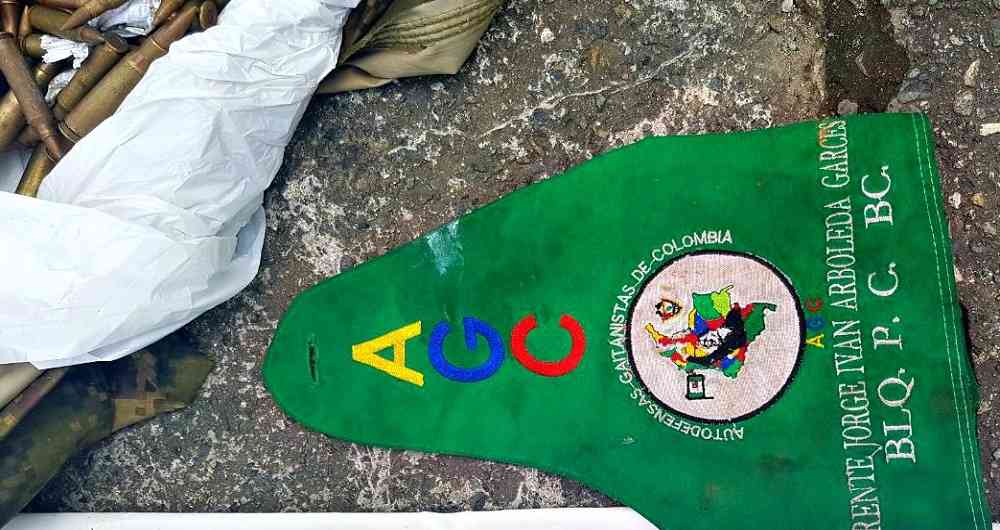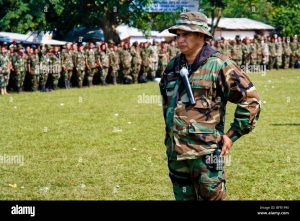
The Clan del Gulfo (AGC), like many drug trafficking outfits, was born from an internal clique of the United Self Defense Forces of Colombia (AUC) which seized the Urabá region of Colombia which is adjacent to the Panamanian border and allows access to both the Caribbean and the Pacific. That group fought a bloody campaign of low level intensity asymmetric combat against the Colombian government and Communist Colombian groups such as the FARC and ELN, beginning in 1997. This conflict highlights the political ideologies of these far fight paramilitary cartels, who for years, received preferential treatment from the Colombian military due to the shared anti-communist values. However, after nearly 9 years of fighting, in 2006 UAC leader Freddy Rendon chose to demobilize the group after the conflict had left more than 3,000 people dead, creating a power vacuum that was immediately filled by Rendon’s brother, Mario (Don Mario), who utilized much of the former smuggling routes, personnel, and equipment of the defunct UAC.
Under the leadership of Don Mario, the AGC, expanded operations into Southern Córdoba, Lower Cauca and Medellín, setting up a confrontation with the Paisas, a militant group within the Oficina de Envigado, another Colombian cartel. This low level war killed an estimated 3,000 people and attracted the attention of the Colombian government, who captured Don Mario on April 15th, 2009. Brothers, Juan de Dios and Dario Antonio Usaga took over
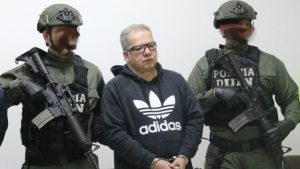
the group, with Dario being the recognized leader. However, Juan de Dios Usaga was killed by Colombian police in a raid on his ranch in Chocó on January 1st, 2012. After his brother’s death, Dario Antonio Usaga flexed his muscles and issued thousands of pamphlets which ordered civilians into an economic strike across Northern Colombia in which thousands of citizens did not leave their homes, the group also offered $1,000 bounties on each police officer killed in Antioquia, officially setting up a confrontation with the
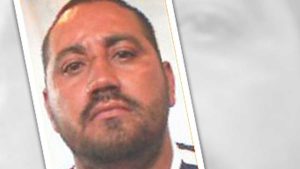
Colombian government. This confrontation came in the form of Operation Agamemnon I and II which over a two-year period captured more than 100 million tons of cocaine, 1,500 personnel and more than $170 million in assets. Through 2015 to 2021 the AGC continued to grow and fight with rivals, ELN and FARC dissidents, even after the negotiated demobilization of FARC with government forces. The AGC in fact made two attempts to demobilize and surrender to the Colombian government and rebrand its image from a drug cartel to its original paramilitary roots. However, President Ivan Duque ended all negotiations upon taking office in 2018, mostly due to the outrage of the Antioquia night club bombing carried out by AGC members, leaving the group to attempt to reassert control over lands abandoned by FARC and to fight the dissidents who refused to surrender. However, on October 23rd, 2021, Usuga was captured by the Colombian military in an operation that involved hundreds of troops, 20 helicopters, elements of the Colombian Navy and drones. His capture was described by president Duque as “the final blow to the Clan del Golfo.” However, despite being held for a year by the Colombian government, he was extradited to the U.S. in May of 2022, triggering another AGC shutdown in Northern Colombia, prompting deployment of more than 2,000 soldiers to quell the cartel violence. Since Usaga’s arrest, the AGC has released several statements hoping to invite peace talks with Gustavo Petro’s newly elected government. Since Petro was formerly a guerilla fighter in the ELN, it is possible that he will pursue similar peace agreements with the AGC that are currently being established with his former group, despite rhetoric on the campaign trail saying that he sought the complete dissolution of such groups and their members being brought to justice.
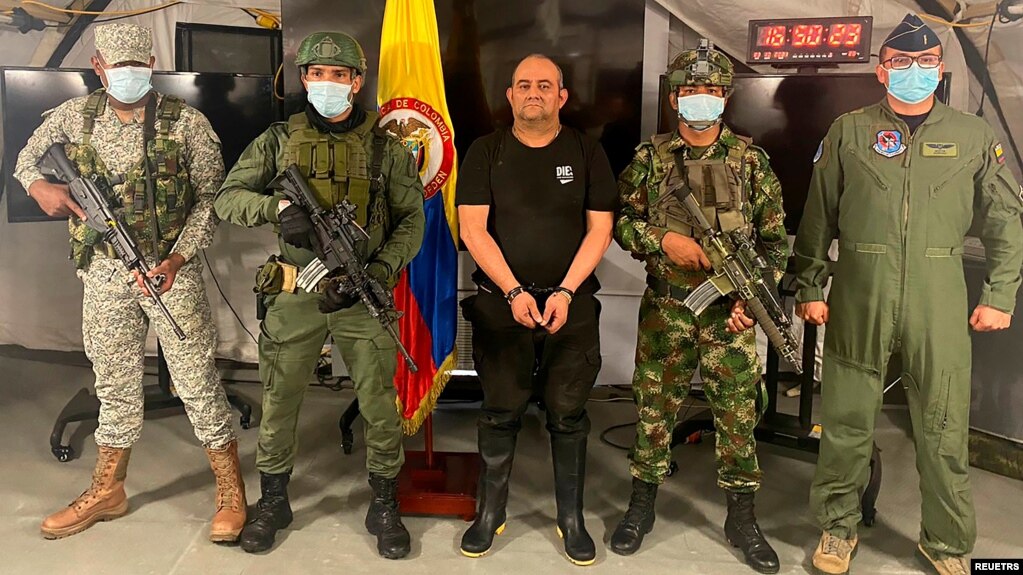
Organization/ Structure
The core command group of the AGC is comprised of 1,500 members that operate from their historic headquarters around the Urabá gulf in the municipalities of Tierralta and Valencia of Cordoba as well as 11 other municipalities in Antioquia. To put this to scale, the AGC operates in 279 municipalities throughout 27 departments, although their presence is only assessed to be at least marginal in 17 departments. These members receive direct orders from the leadership of the AGC and ensure successful franchise development throughout Colombia. It is important to note that the AGC is not interested in vertical control of the entire supply chain of drug smuggling, rather, the group seeks to hire gangs to collect taxes, protect supply lines, and carry out intimidation and violence. The entire group is made up of 51 regional commands which has a criminal structure with autonomy to hire so as to not expose its own members. However, it is important to note that the core command group does post members directly to one third of the 51 commands, exercising direct control. The central command group does not explicitly financially support each regional command, requiring each to finance its own overhead costs, often leading to micro-trafficking, exploitation of migrant labor, extortion, and mining. However, this decentralized structure also presents its own problems; in June of 2021, reports emerged of internal conflict with a group called the Caparrapos, who broke off from their regional command in Bajo Cauca and allied with FARC dissidents in order to fully control their own mining operations.
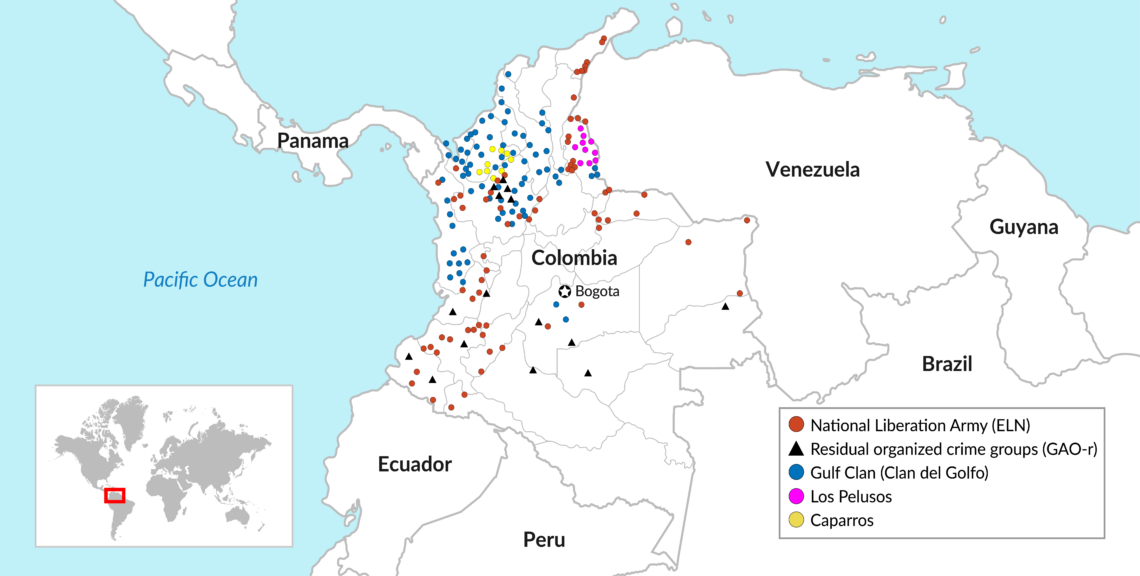
Economy
The Colombia Drug Trade, which is dominated by Cocaine, is roughly worth $10 Billion, with the AGC controlling roughly 43% of the trade. While the AGC does control some production sites, which were bought out from the ELN, it is primarily through ensuring security of supply lines and collecting revenue from the transportation and eventual sale of cocaine products, that the AGC generates its projected $5 billion yearly revenue streams. In fact between 2006 and 2012 the AGC moved about 73 metric tons of cocaine into the U.S. through its cooperation with the Sinaloa Cartel. It is important to note that after the fall of the Medellín Cartel and the death of Pablo Escobar, Mexican cartels took over much of the cocaine exportation in Northeast Colombia, and it was not until the early ‘90s when groups such as the UAC and now AGC began taking over. Those shipments usually look like airplanes and ships loaded with anywhere from 300 to 600 kilograms each. While the AGC does significant business with the Sinaloa Cartel to deliver cocaine products to the U.S., it also has an extensive network of buyers in more than 28 countries with the most profitable being the Balkans, Belgium, Spain, the Netherlands, Germany and France. In fact, one of the largest ever seized shipments of cocaine from the AGC occurred in June of 2022 when 4.3 tons was taken by Italian police. Ironically, the structure of the AGC played a large part in the successful bust in that the Italian buyers did not know that the shipment they were receiving was already intercepted by investigators. Since the AGC did not maintain direct control of the supply line, investigators were able to insert, remove the drugs, and capture the buyers at the delivery site, all without the AGC knowing. The street value of the shipment was estimated at $255.86 million and was the third largest drug bust in European history, indicating the prominence of the AGC, even after the arrest of Usaga in 2021.
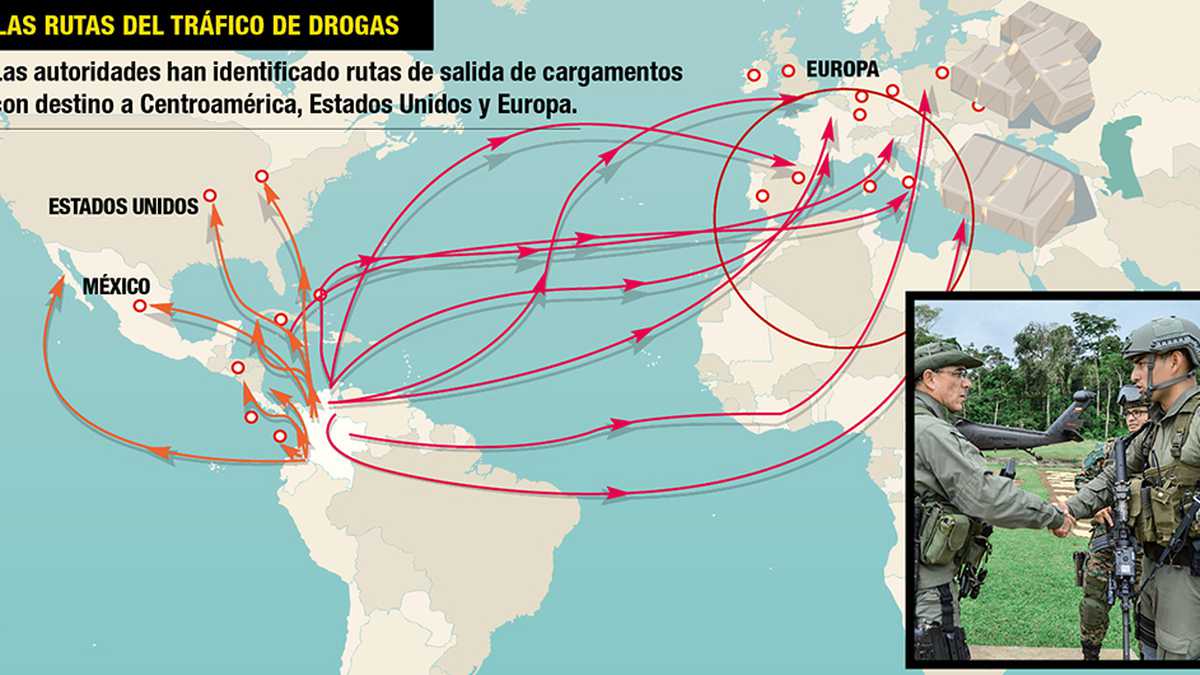
Effects on the Host State
The AGC arose after the demobilization of the AUC in 2006 and has since grown to encompass 43% of the Colombia drug trade. It is important to note that while the drug trade is the major vehicle in which the AGC finances and exercises their power, it is still a neo-paramilitary group whose members are clad in camouflaged uniforms and employ automatic weapons, artillery, aircraft, and naval vessels to secure their interests. During periods of extreme fighting such as 2006-2009, thousands of civilians, Colombian military, ELN, FARC and AGC members were killed, and hundreds of thousands displaced. So much that ACAPS has published several reports documenting the plight of these internally displaced persons, thousands of them being indigenous. In 2016, 187,000 people were displaced or confined to their homes in Chocó alone. Due to a lack of state presence in the Northeast parts of the country it is impossible to know the true impact of not only the fighting, but also assassinations, extortion, and other criminal related violence surrounding the Colombia drug trade.
The AGC uses its revenue streams to arm itself with sophisticated weapons that rival terrorist organizations engaged in conventional warfare in the Middle East. For example, from January to July of 2021, three major arms shipments were seized that included rocket propelled grenades, thousands of rounds of ammunitions, small arms, and explosives. These weapons are put to use against rival groups as well as government forces. Even more distressing, in 2019, 59 persons were killed or injured by anti-personnel mines that the AGC manufactures in workshops throughout Colombia, prompting the military to raid several villages in order to destroy these facilities. On April 5th, 2019 the Colombian military seized 563 anti-personnel mines in Flechas, an AGC controlled village. This seizure enforces the notion that cartel activity is not only criminal, but also militant in nature, presenting a significant security risk to the Colombian government.
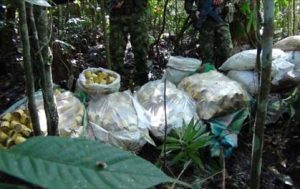
As mentioned earlier, the AGC has a unique ability to enforce regional lockdowns of civilians. This capability not only endangers lives, but greatly reduces the legitimacy of the Colombian government and military. When Usaga was extradited to the U.S. in May of 2022, thousands of indigenous people in villages in Northeast Colombia were ordered to stay in their homes or face execution. AGC agents placed roadblocks, burned vehicles, and killed more than 26 people, prompting President Duque to deploy 2,000 soldiers to reinstate order. This type of action and response calls into doubt the sovereignty of the national government which already has a colored reputation from the era of the Medellín Cartel. As President Petro continues to consolidate national power within his cult of guerilla personality, reigning in groups such as the AGC, ELN, and FARC must be national security priority number one in order to legitimize the Colombian government in these critical regions.
Conclusion
The Clan Del Golfo, also known as the Autodefensas Gaitanistas de Colombia (AGC) is the largest and most powerful neo-paramilitary cartel in Colombia. Initially born from the demobilization of the United Self Defense Forces of Colombia (UAC) in 1997, the AGC has risen to control 43% of the nearly $10 billion Colombia drug trade. It has achieved this through de-centralized control of 51 regional commands in which no vertical control of cocaine production is necessary, unlike the extremely centralized Medellín Cartel under Pablo Escobar in the ‘70’s. By hiring mercenaries, the 1,500 core command group in Northeast Colombia is able to shield its 3,000-6,000 members while also ensuring the security of its supply routes from rival groups such as the ELN and FARC. While the AGC has suffered several blows in the last three years, namely the arrest and extradition of its most successful leader, Dario Antonio Usaga, the decentralized structure will make it extremely difficult to stamp out, short of massive troops deployments and subsequent mid-level war with the Colombian government. It is currently unclear if newly elected President Petro will be able to demobilize the AGC through negotiation, but it is in his best interest to do so in order to restore domestic and international confidence in the sovereignty of the Colombian government.

